Ching-Hua Chuan
A Functional Taxonomy of Music Generation Systems
Dec 11, 2018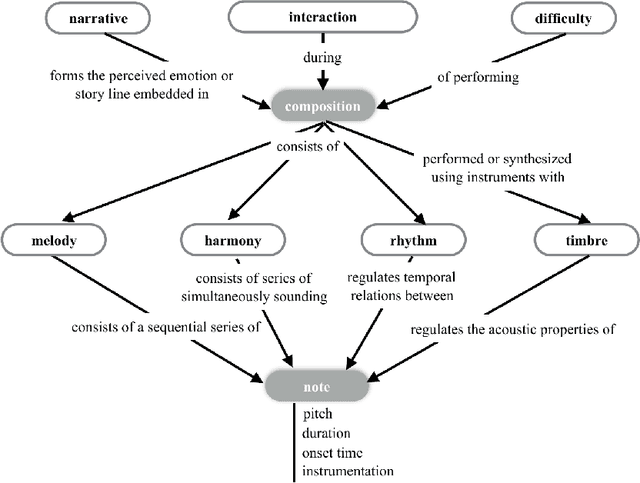
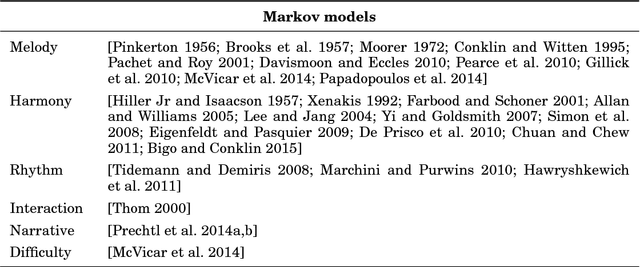
Abstract:Digital advances have transformed the face of automatic music generation since its beginnings at the dawn of computing. Despite the many breakthroughs, issues such as the musical tasks targeted by different machines and the degree to which they succeed remain open questions. We present a functional taxonomy for music generation systems with reference to existing systems. The taxonomy organizes systems according to the purposes for which they were designed. It also reveals the inter-relatedness amongst the systems. This design-centered approach contrasts with predominant methods-based surveys and facilitates the identification of grand challenges to set the stage for new breakthroughs.
* survey, music generation, taxonomy, functional survey, survey, automatic composition, algorithmic composition
From Context to Concept: Exploring Semantic Relationships in Music with Word2Vec
Nov 29, 2018
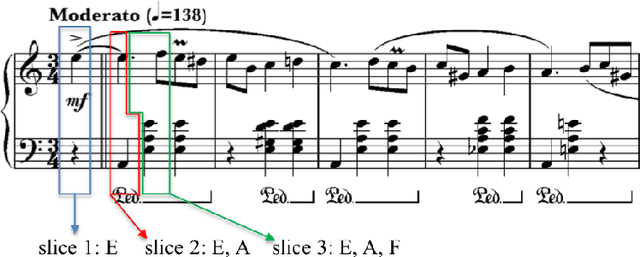
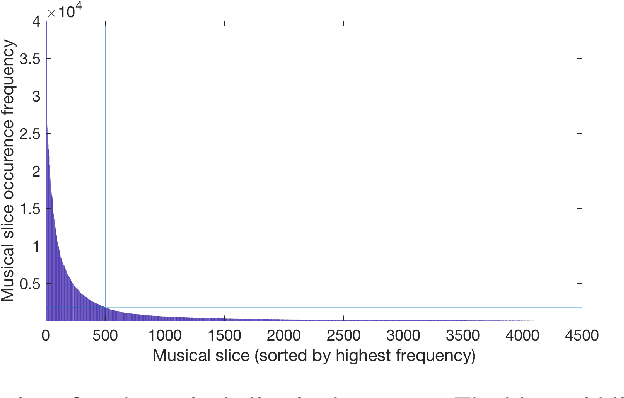
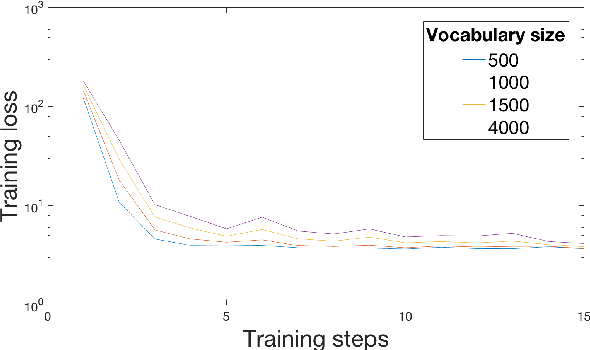
Abstract:We explore the potential of a popular distributional semantics vector space model, word2vec, for capturing meaningful relationships in ecological (complex polyphonic) music. More precisely, the skip-gram version of word2vec is used to model slices of music from a large corpus spanning eight musical genres. In this newly learned vector space, a metric based on cosine distance is able to distinguish between functional chord relationships, as well as harmonic associations in the music. Evidence, based on cosine distance between chord-pair vectors, suggests that an implicit circle-of-fifths exists in the vector space. In addition, a comparison between pieces in different keys reveals that key relationships are represented in word2vec space. These results suggest that the newly learned embedded vector representation does in fact capture tonal and harmonic characteristics of music, without receiving explicit information about the musical content of the constituent slices. In order to investigate whether proximity in the discovered space of embeddings is indicative of `semantically-related' slices, we explore a music generation task, by automatically replacing existing slices from a given piece of music with new slices. We propose an algorithm to find substitute slices based on spatial proximity and the pitch class distribution inferred in the chosen subspace. The results indicate that the size of the subspace used has a significant effect on whether slices belonging to the same key are selected. In sum, the proposed word2vec model is able to learn music-vector embeddings that capture meaningful tonal and harmonic relationships in music, thereby providing a useful tool for exploring musical properties and comparisons across pieces, as a potential input representation for deep learning models, and as a music generation device.
* Accepted for publication in Neural Computing and Applications, Springer. In Press
Modeling Musical Context with Word2vec
Jun 29, 2017


Abstract:We present a semantic vector space model for capturing complex polyphonic musical context. A word2vec model based on a skip-gram representation with negative sampling was used to model slices of music from a dataset of Beethoven's piano sonatas. A visualization of the reduced vector space using t-distributed stochastic neighbor embedding shows that the resulting embedded vector space captures tonal relationships, even without any explicit information about the musical contents of the slices. Secondly, an excerpt of the Moonlight Sonata from Beethoven was altered by replacing slices based on context similarity. The resulting music shows that the selected slice based on similar word2vec context also has a relatively short tonal distance from the original slice.
* Proceedings of the First International Conference on Deep Learning and Music, Anchorage, US, May, 2017 (arXiv:1706.08675v1 [cs.NE])
Proceedings of the First International Workshop on Deep Learning and Music
Jun 27, 2017Abstract:Proceedings of the First International Workshop on Deep Learning and Music, joint with IJCNN, Anchorage, US, May 17-18, 2017
 Add to Chrome
Add to Chrome Add to Firefox
Add to Firefox Add to Edge
Add to Edge